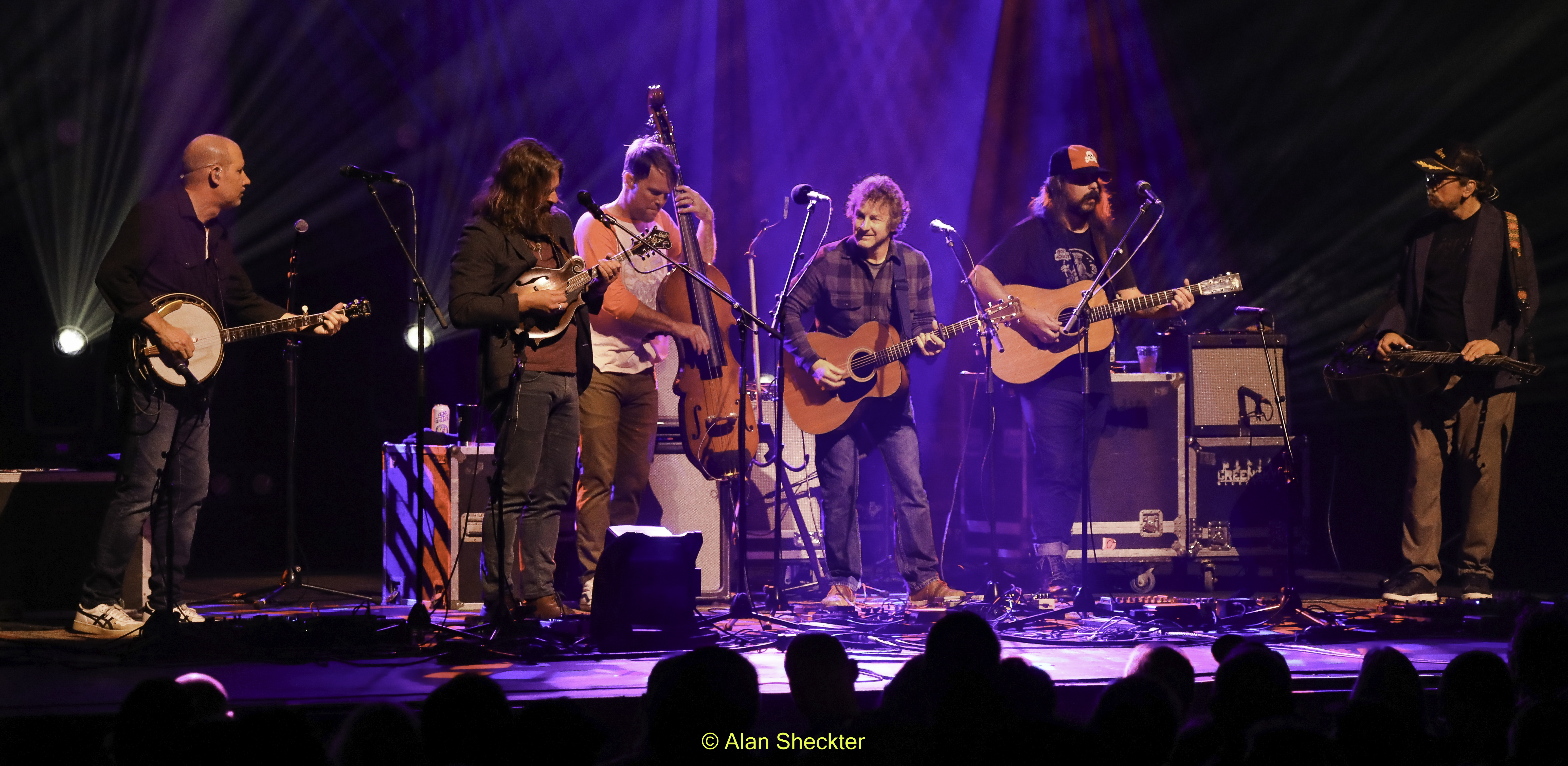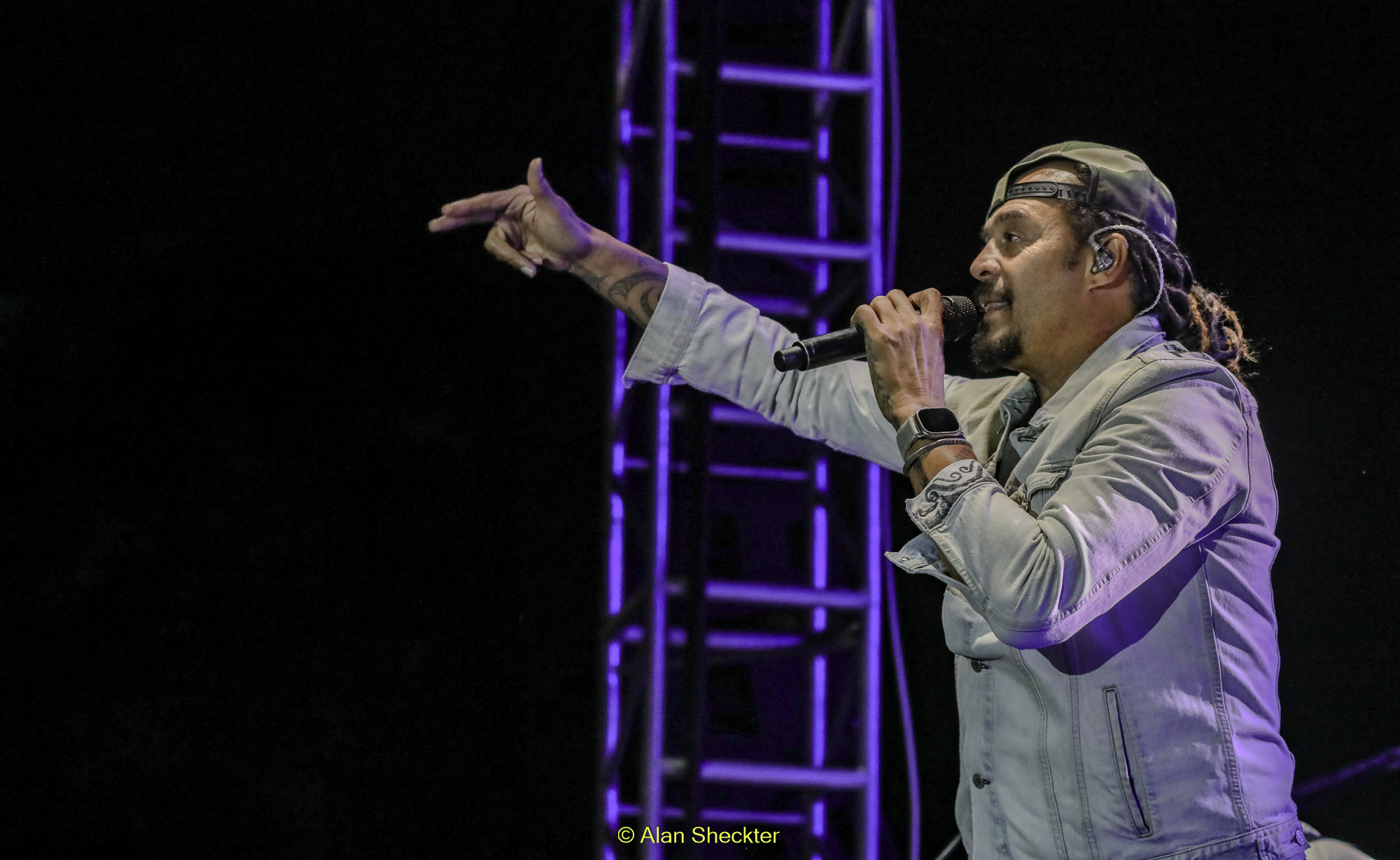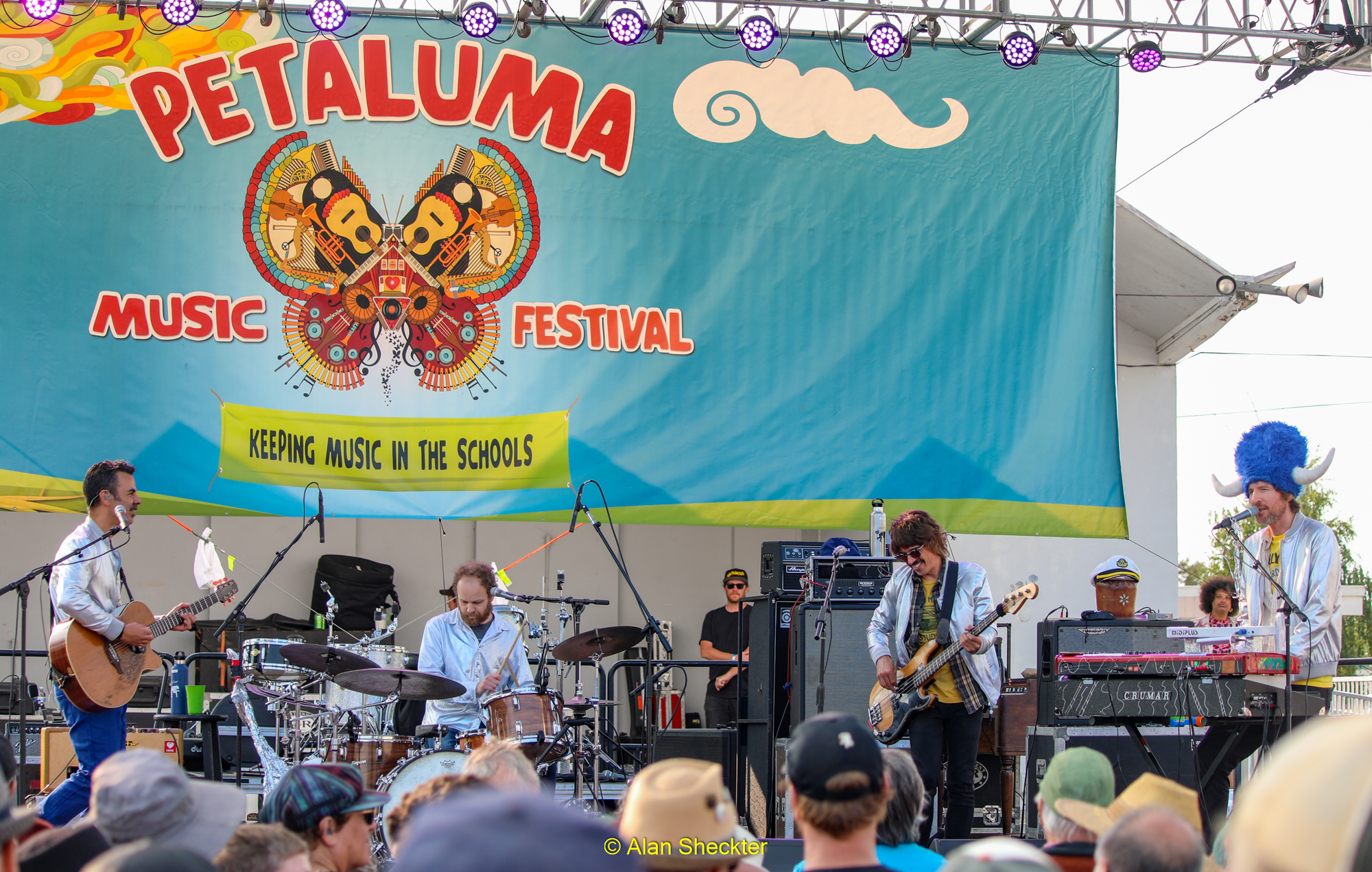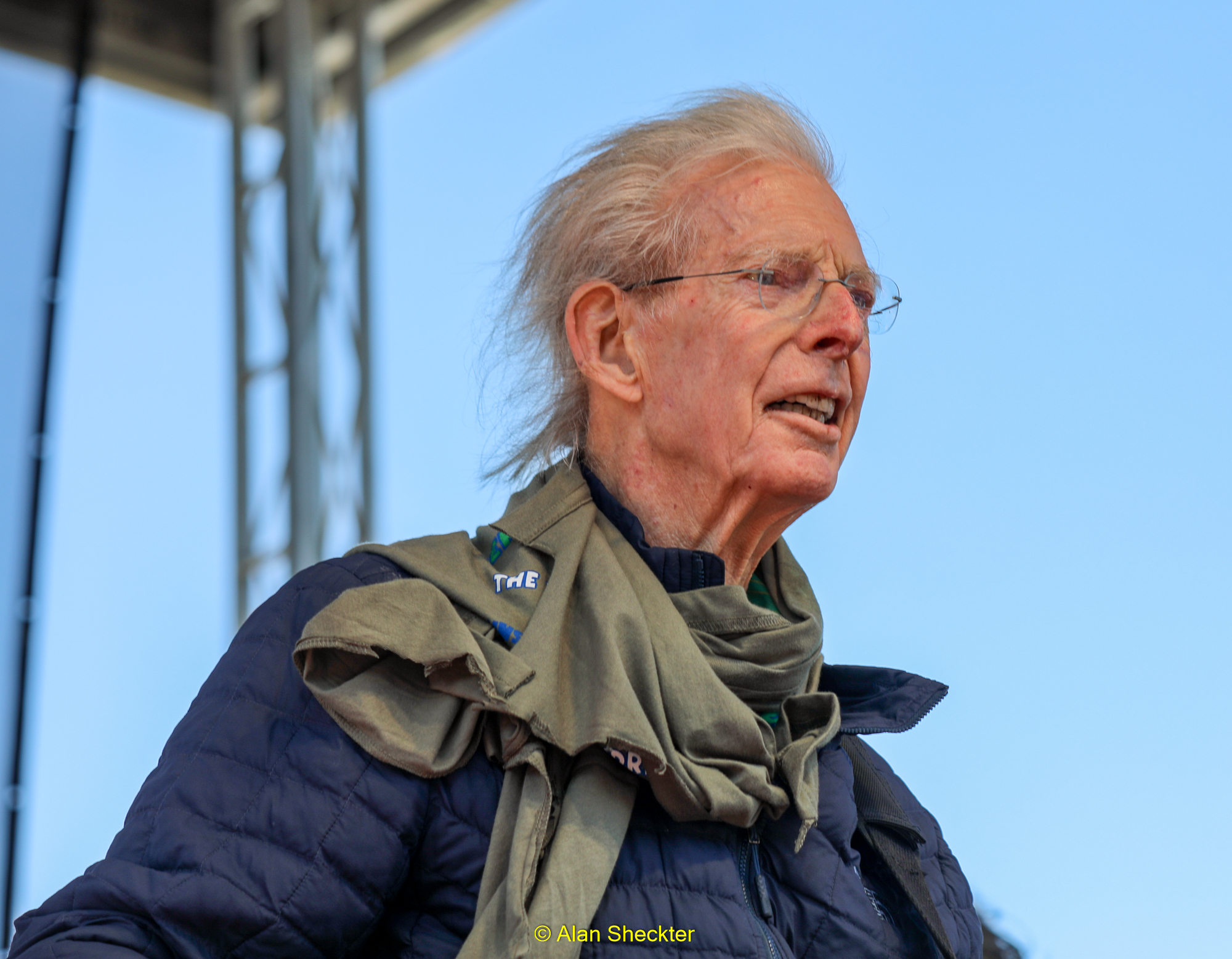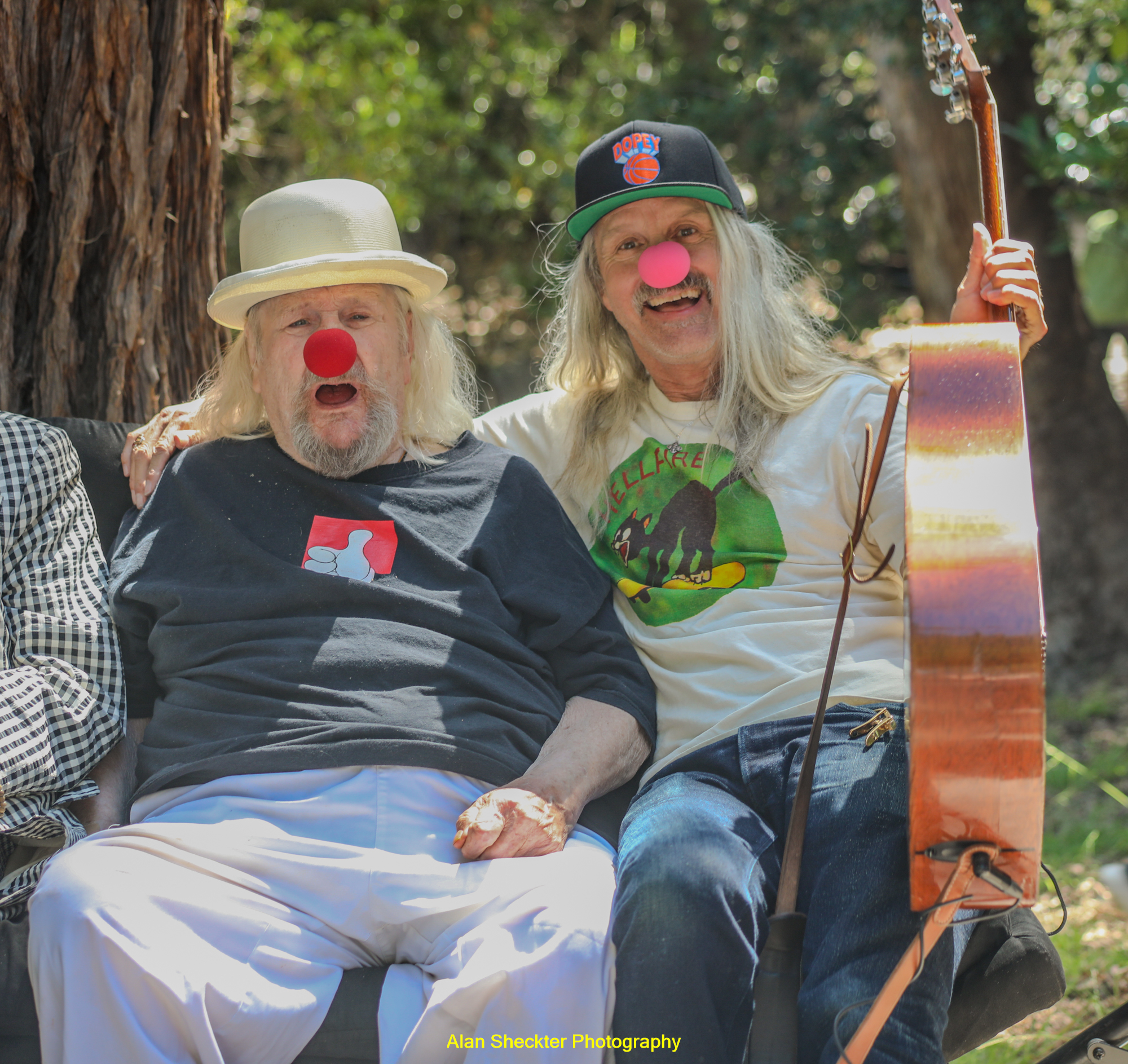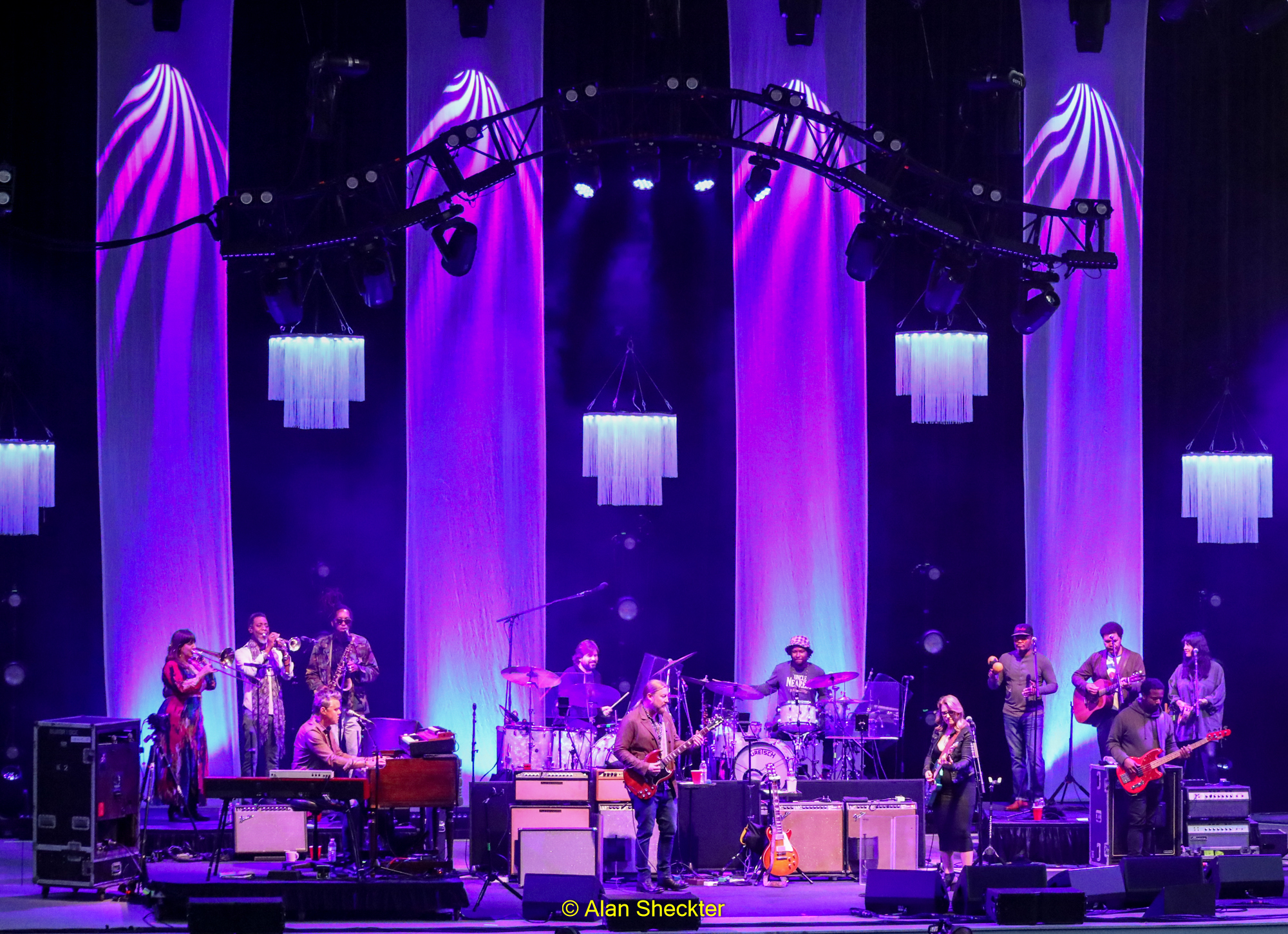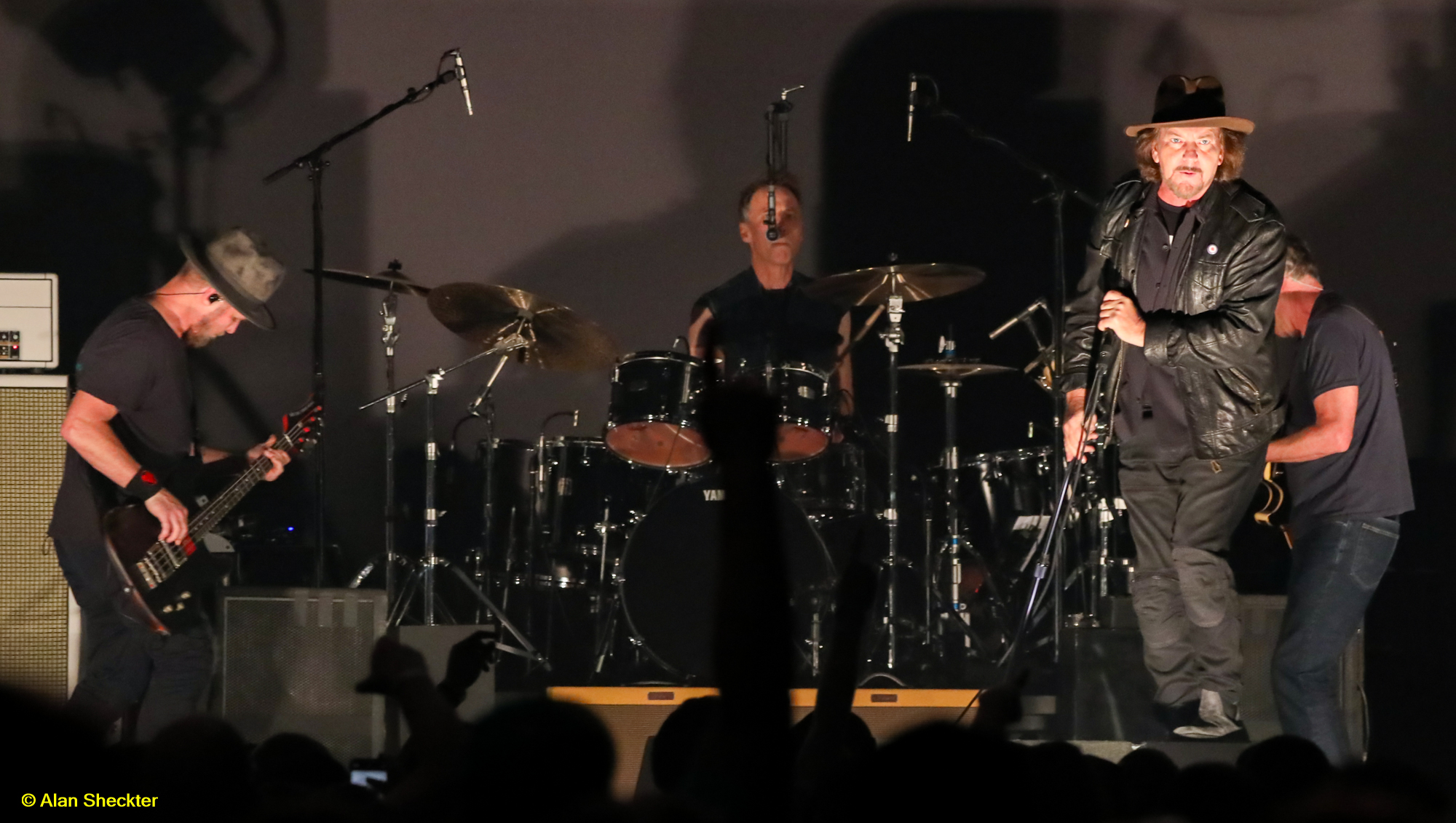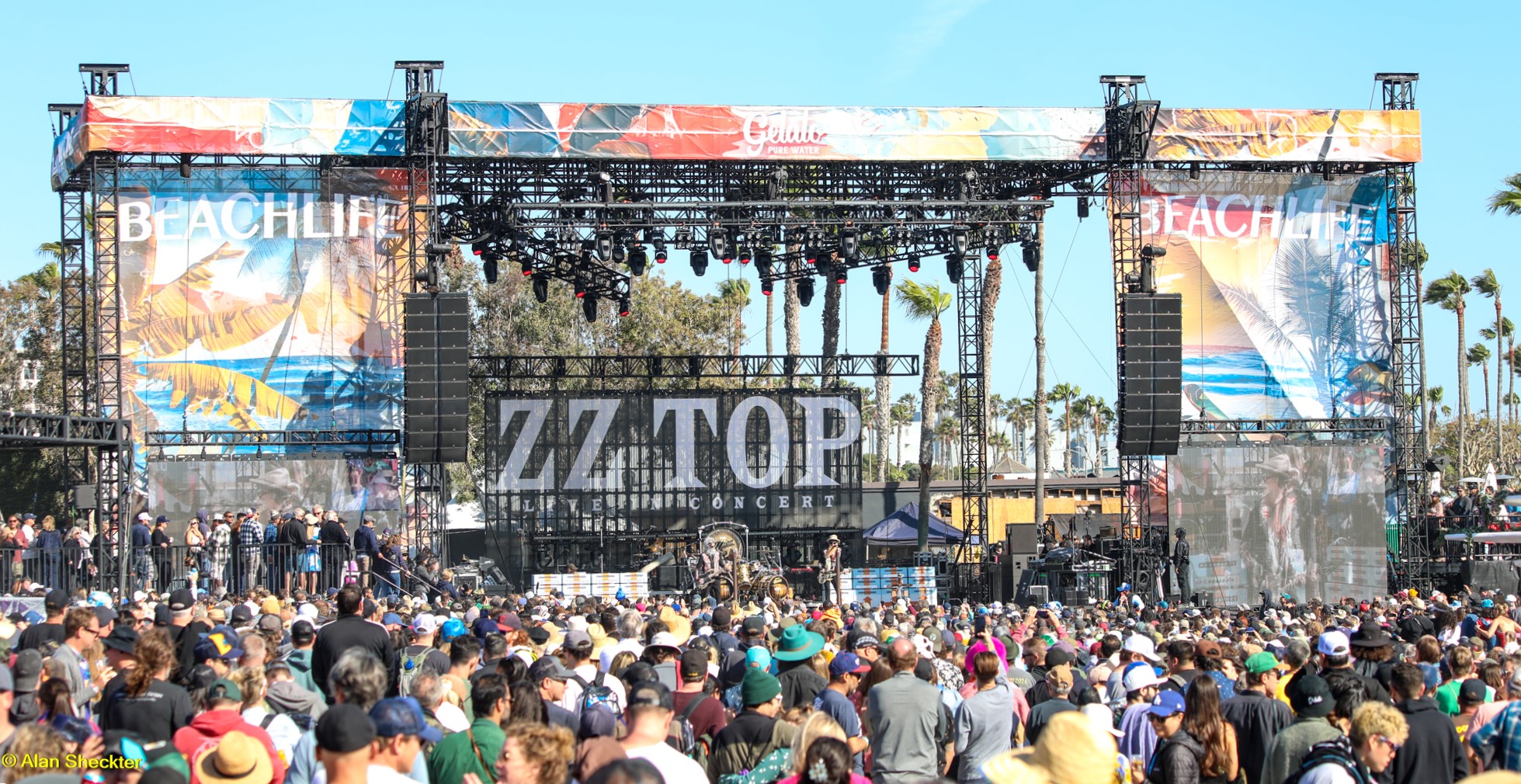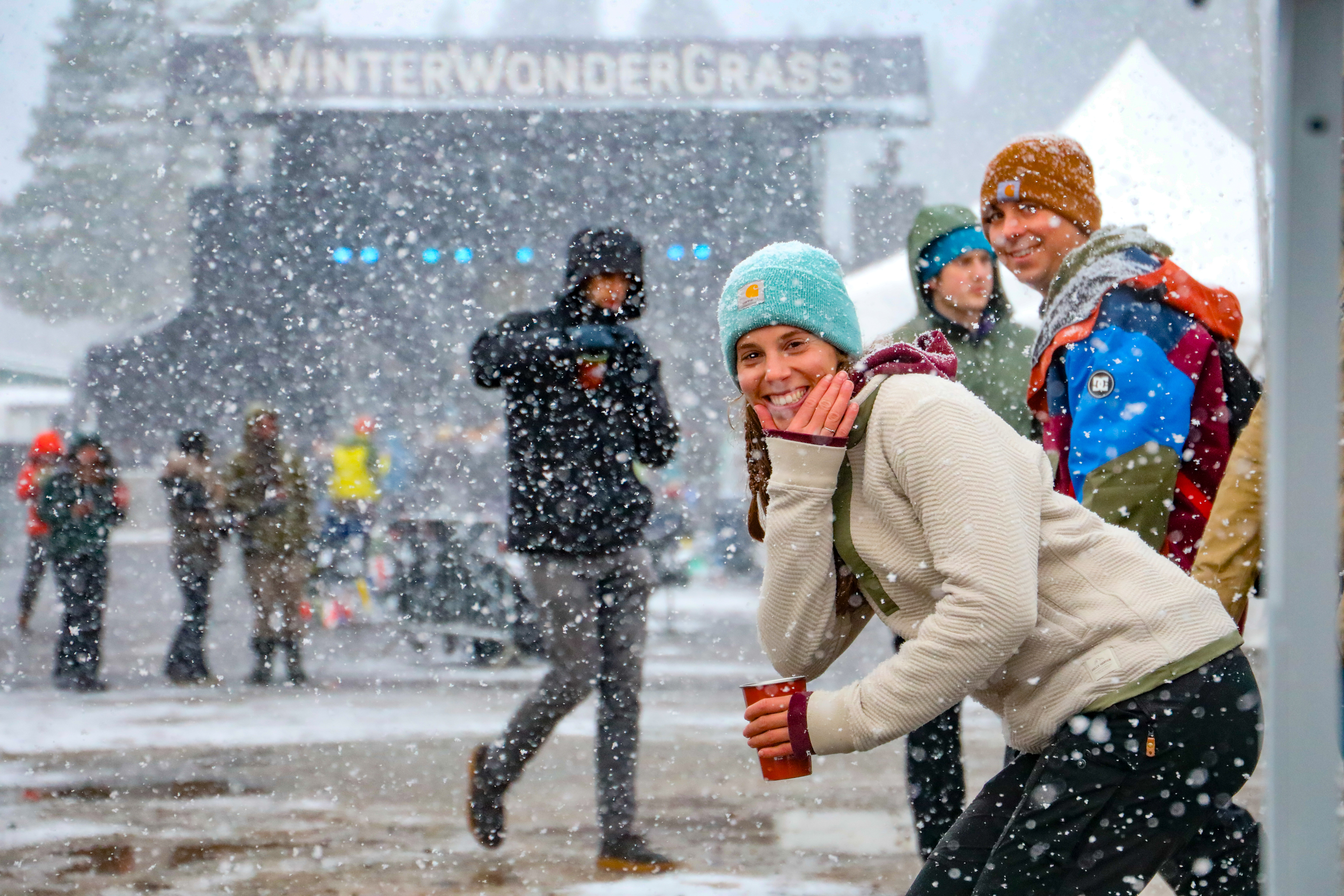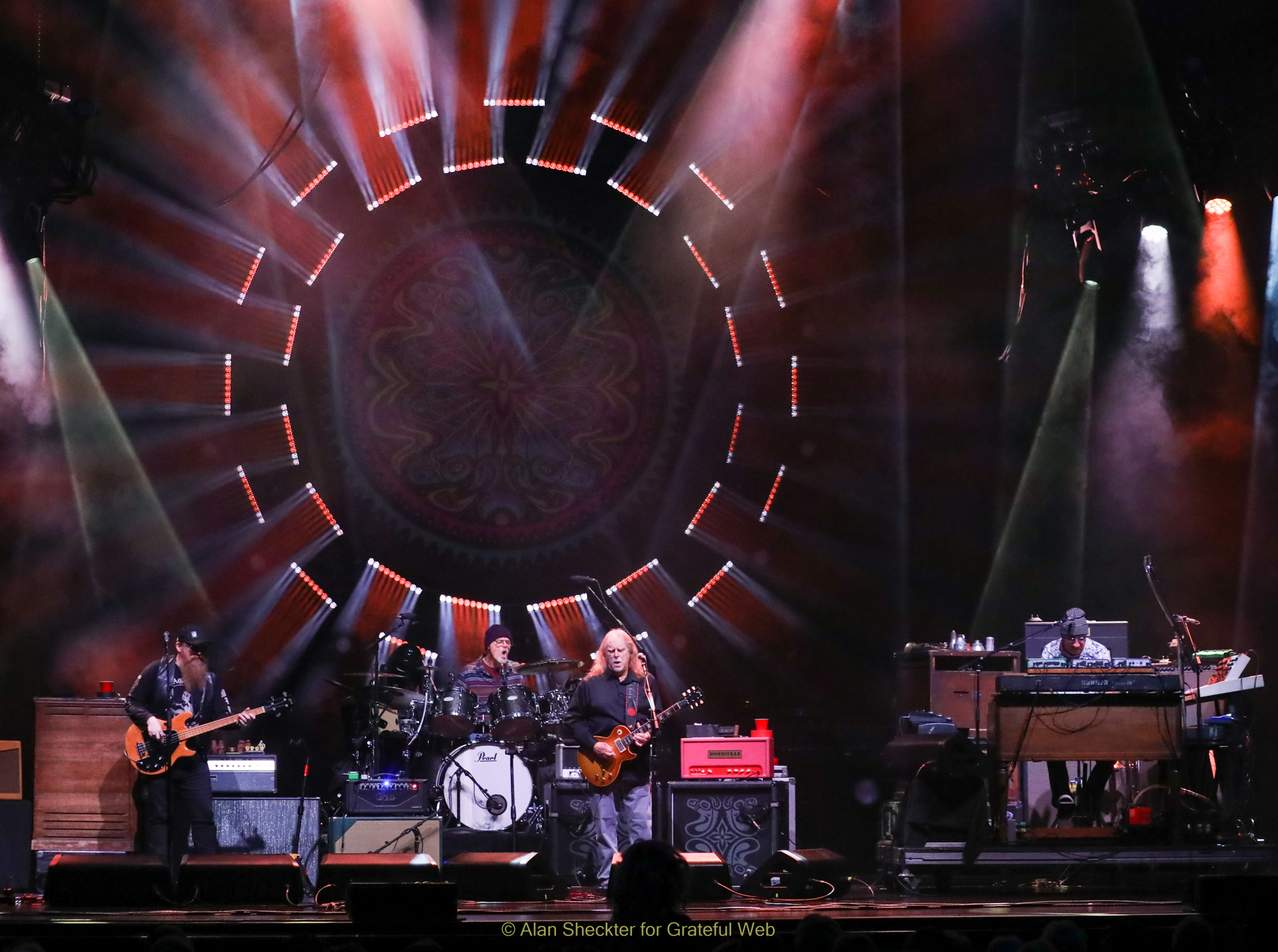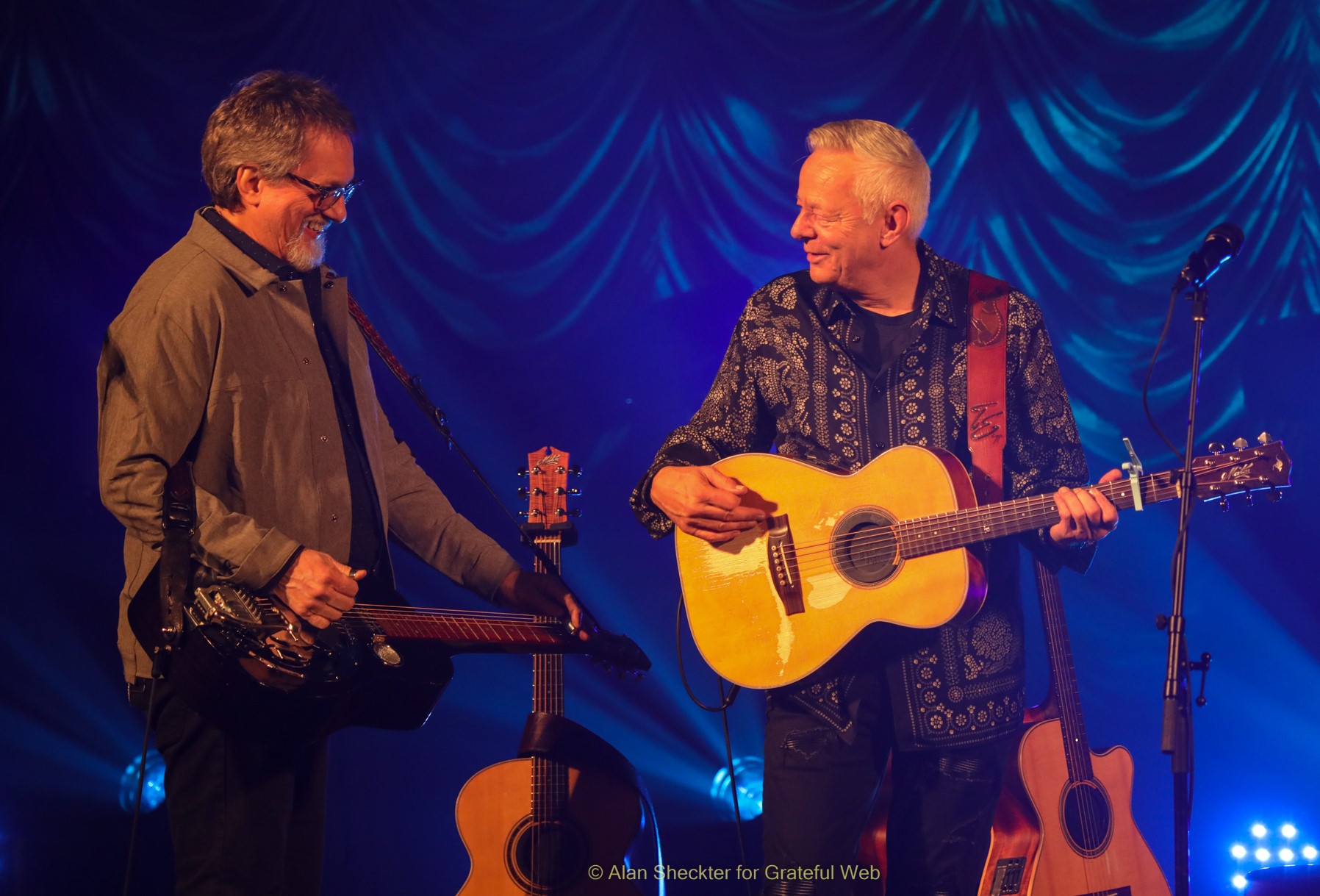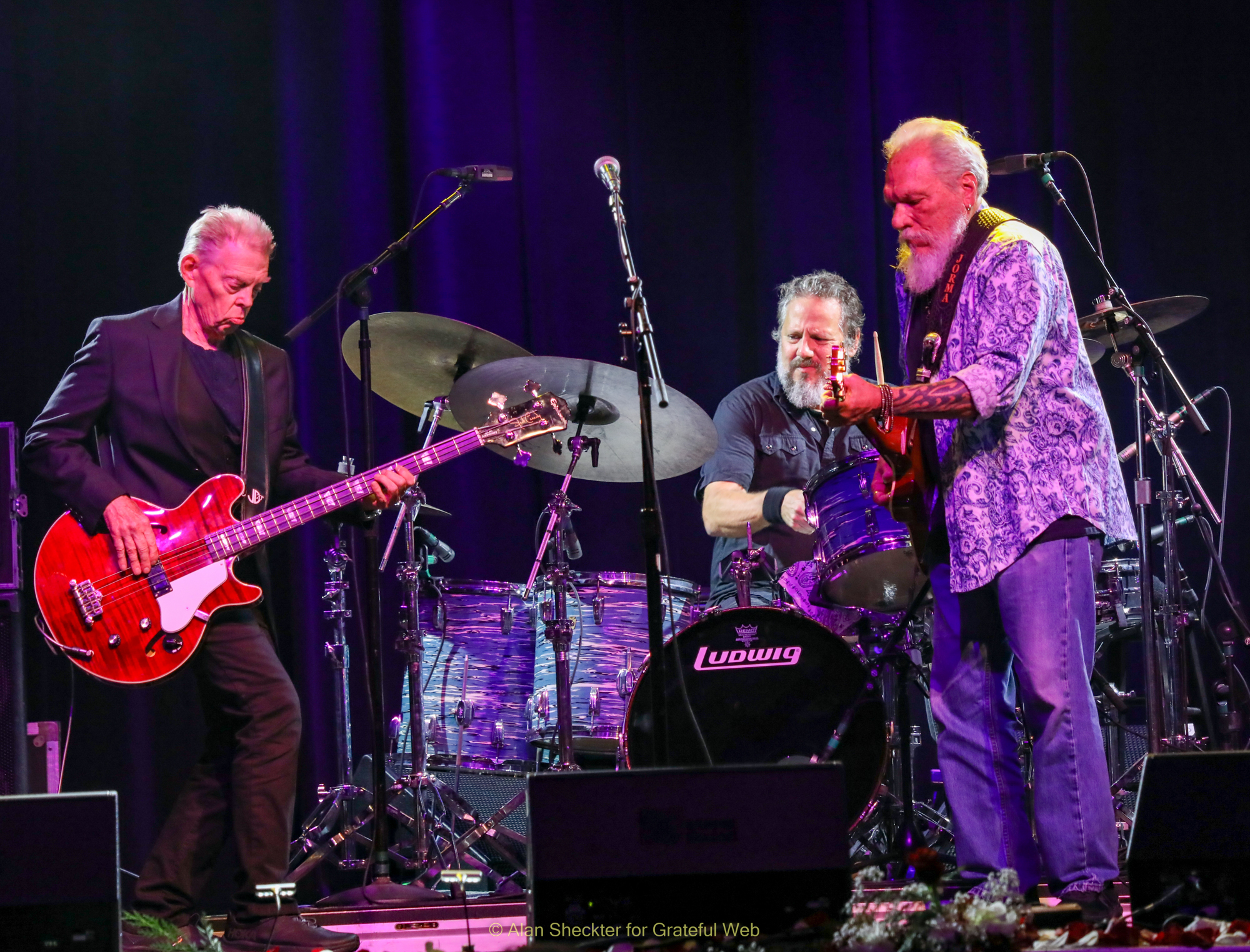Observing the full Dead & Company experience on July 2 at Shoreline Amphitheatre, from early afternoon happenings outside the San Francisco Bay Area venue through the encore’s final exclamation of “We Will Survive!” confirmed that the band’s cultural anthropology, centered around spirited live renderings of Grateful Dead music, still colorfully and cheerfully thrives.
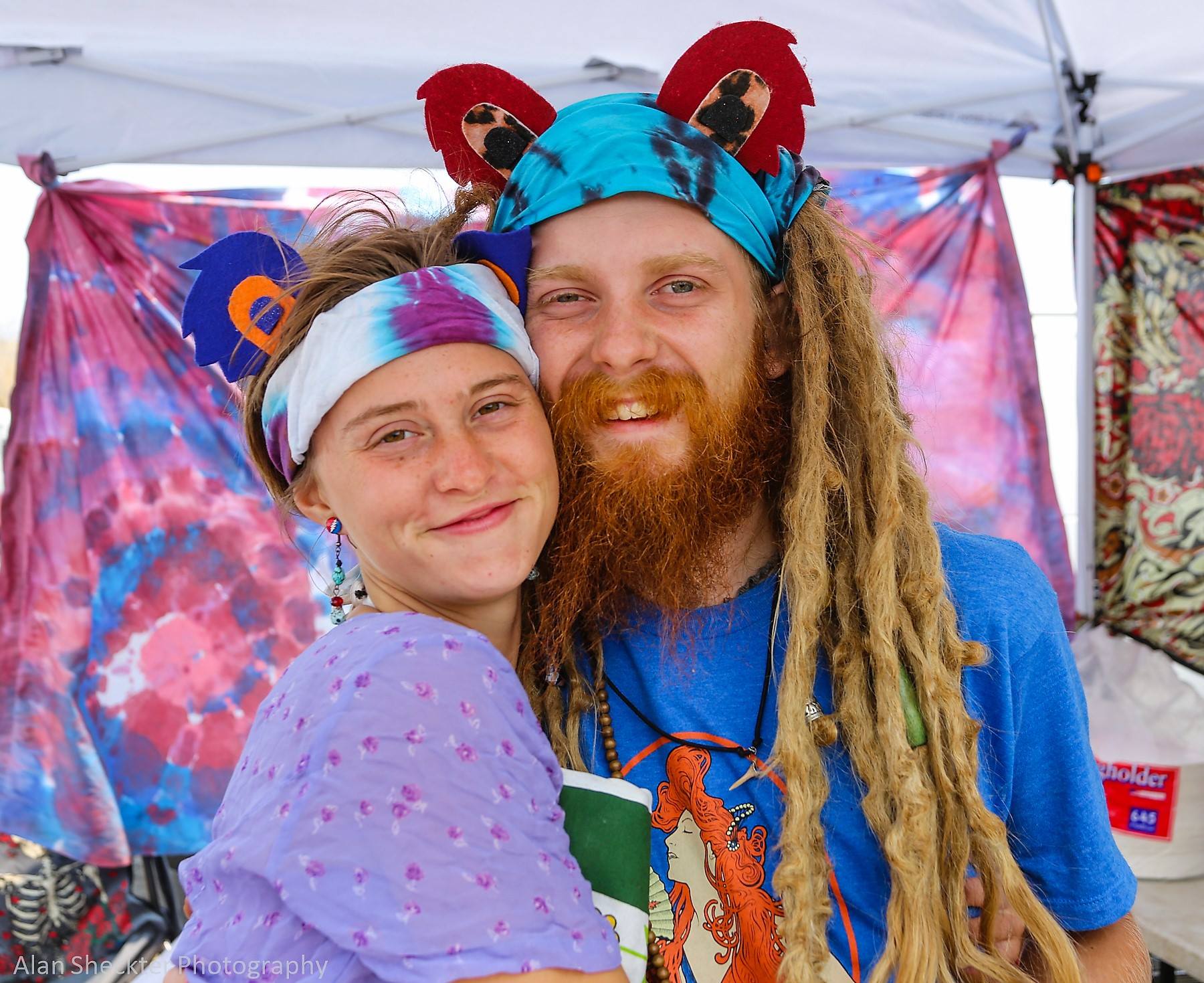
While the concert’s official activities took place onstage, the travel from show to show and the preshow rituals at each venue have for many decades been a part of the overall “scene” for Dead & Company, The Grateful Dead, and all the facsimiles in between. At Shoreline, outside the venue, a pre-show multi-aisled jamboree of artisans of clothing, food, jewelry, and other wares, along with drifting music and free expression was on bountiful display for several hours. It was heartening to observe that this freeform tradition was still being played out 23 years after The Grateful Dead’s final show.
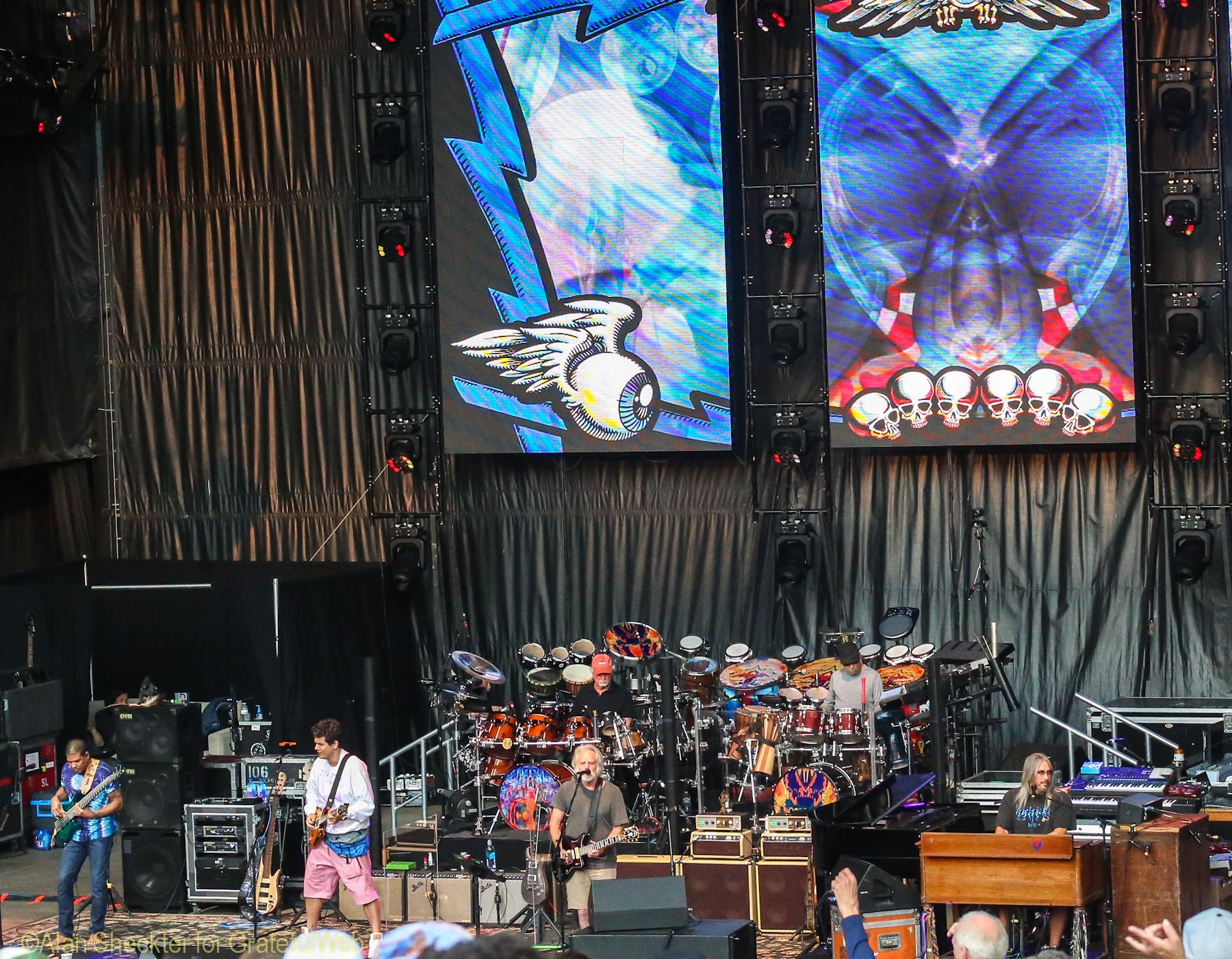
On this, the first of a two-night stint in the San Francisco Bay Area, Dead & Company were powerful and on point throughout, offering beloved song selections that were common among Grateful Dead setlists in the 1970s, ‘80s, and ‘90s. A 14-minute “Feel Like a Stranger” show opener started out slow-of-tempo like many of this band’s performances tend to do, but soon flourished into the full vigor and jazzy complexities that the song can offer. “Dancing in the Streets,” it too a 14-minute marathon of a song, brought a gently funkified essence to the Martha and the Vandellas’ classic that The Grateful Dead performed through their entire career.
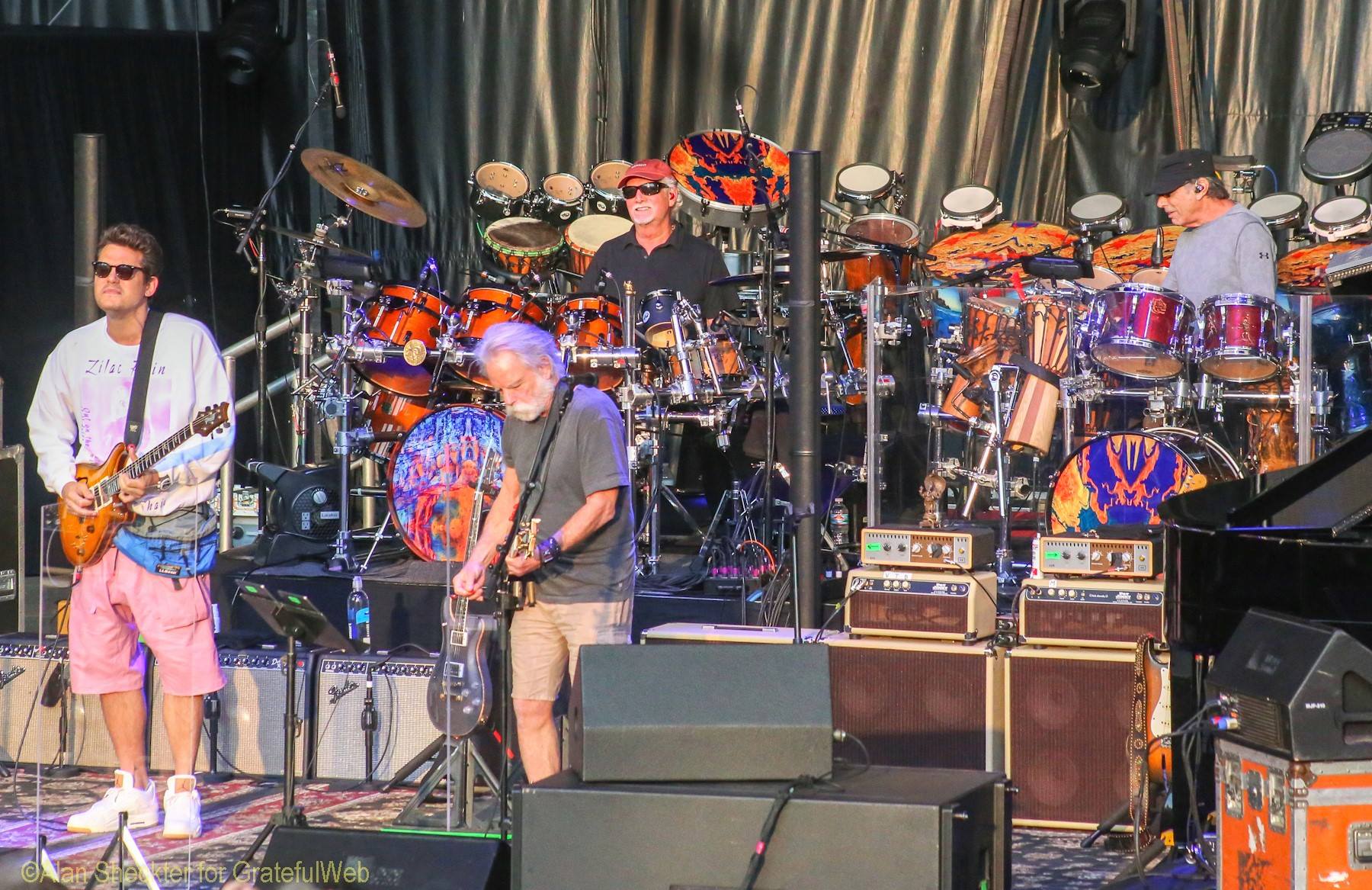
The first set included a couple of select choices that were rarely performed in the past by The Grateful Dead. “Hurts Me Too,” was one such song, a blues standard made famous by Elmore James. The tune, which became forever familiar to Dead Heads from its inclusion on “Europe ’72” and last performed by the original band on May 24, 1972, has emerged on the Dead & Company catalog in 2018. The band’s take on the song, its third such occurrence, was much different than the old Pig Pen-led version, but very well done in a spirit closer to the pure-blues original.
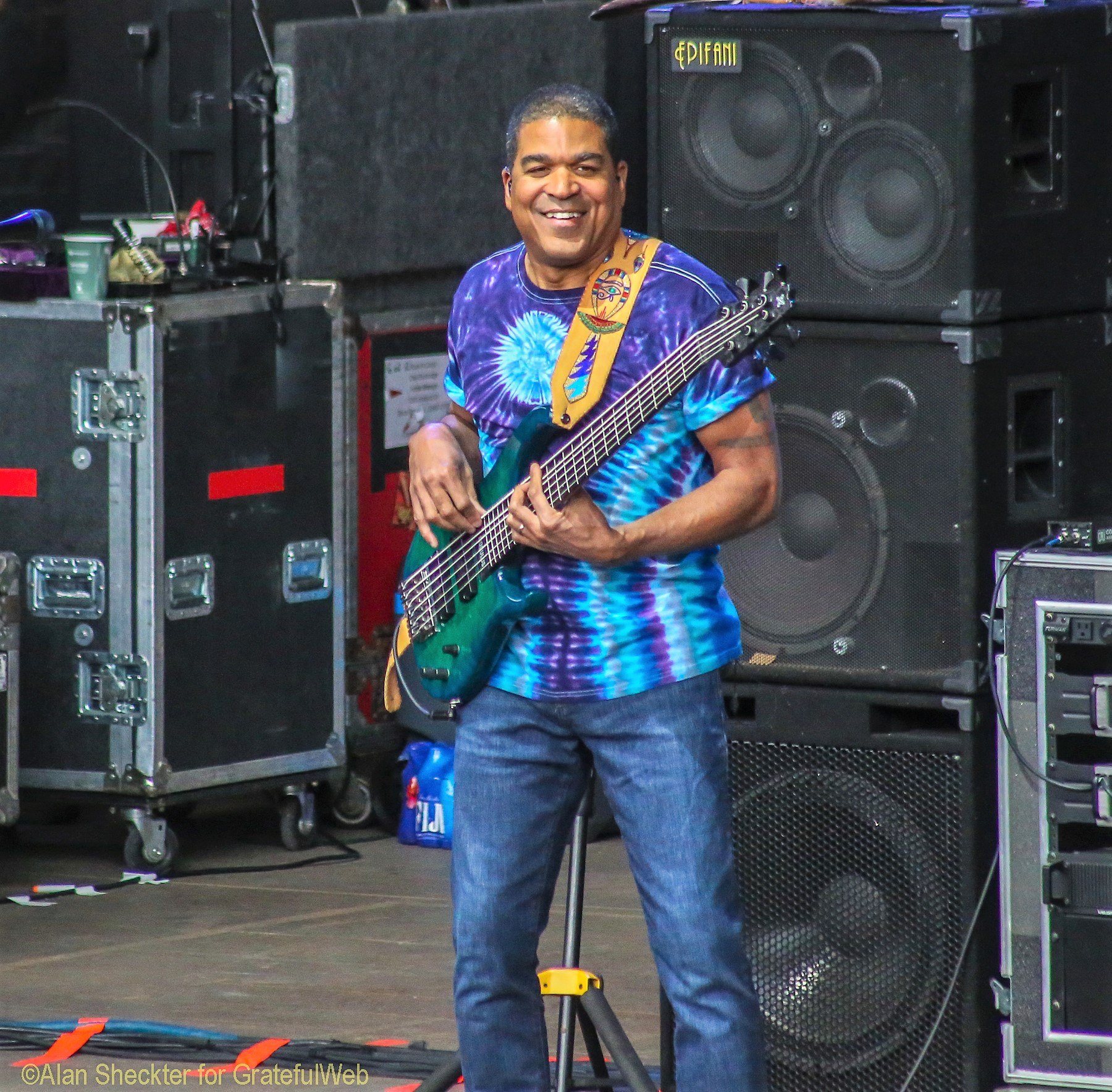
“If I Had the World to Give,” the tender Garcia/Robert Hunter ballad, performed only three times by The Grateful Dead in 1978, was exquisite. The beautiful song was placed in the middle of the first set with bassist Oteil Burbridge’s tenor vocal treatments wafting gently over the vast landscape, and tears of emotion were visible from more than one person in the crowd. Weir next delivered “Corrina,” one of his complex, heretical songs, for just the third time with Dead & Company.
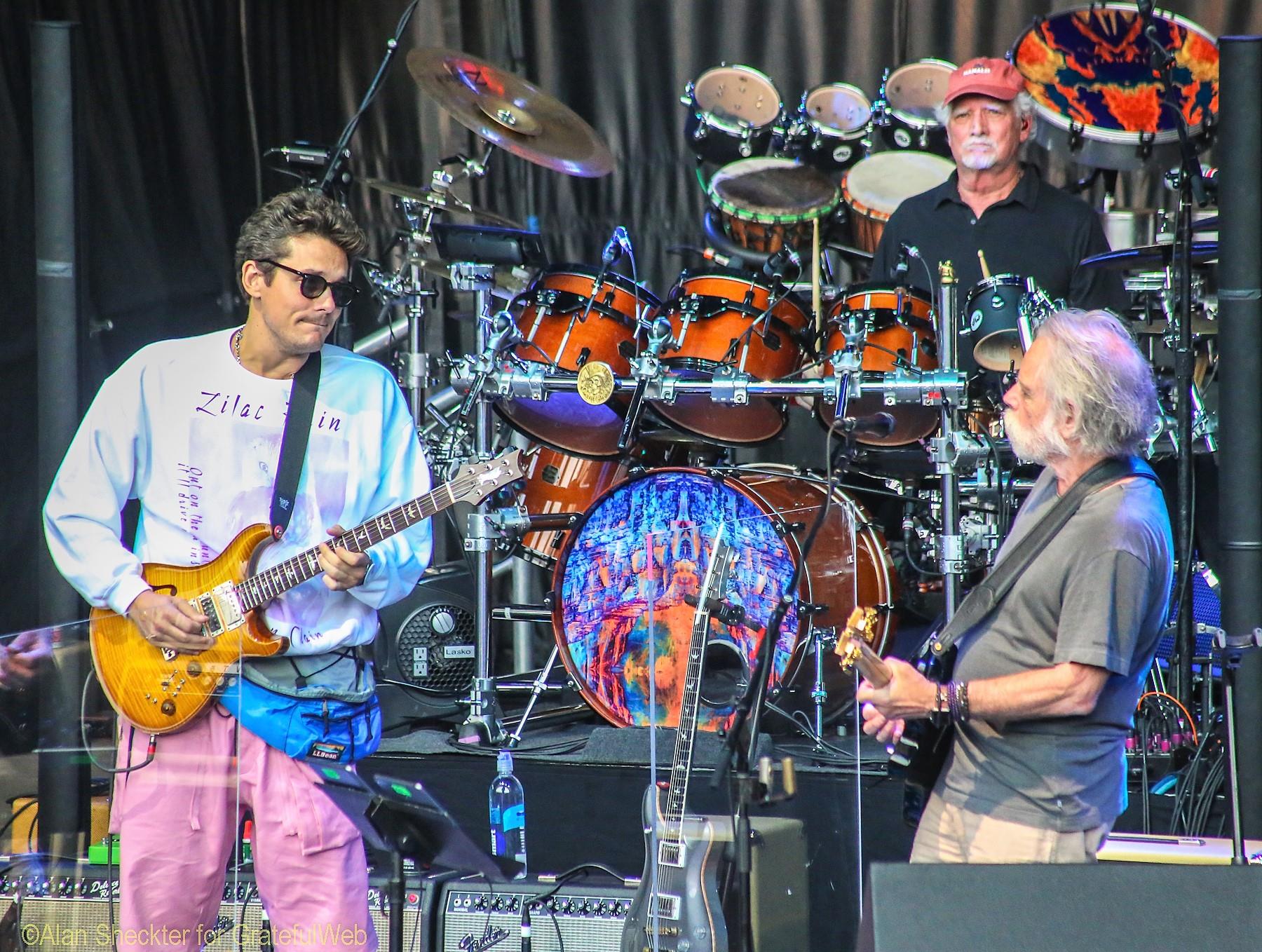
In the department of “strangest of places if you look at it right,” the first set also contained a monumental version of “They Love Each Other.” Though always pleasant in message and reggae-twinged delivery by The Grateful Dead, the song was never a blockbuster. On this night, the 15-minute version of the song was an enormous piece of music with multiple ebbs and flows of rolling, grooving John Mayer lead guitar jams. “They Love Each Other” was followed by a set-concluding “Throwing Stones,” its lyrics ringing true as much today as when it was written some 36 years ago: “Money green or proletarian gray / Selling guns instead of food today / So the kids they dance, and shake their bones / And the politician's throwing stones.”
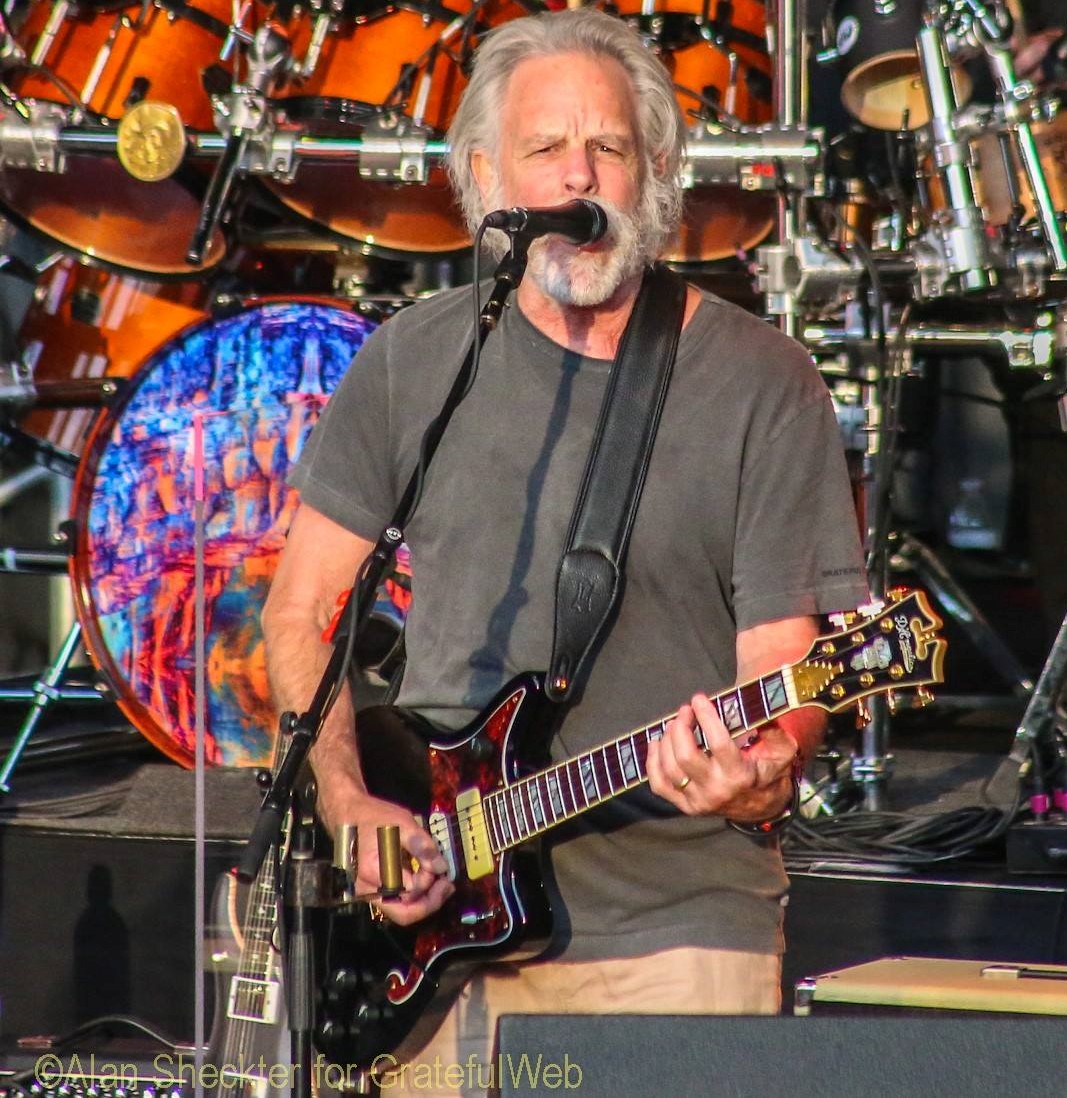
Bob Weir, as the most crucial member of the band, worked hard throughout the evening on his sprightly guitar play, vocals, and leadership. On this night, the band performed a lot of “Weir songs,” which naturally he sang, all feeling as comfortable as an old flannel shirt. Jeff Chimenti, on keyboards, was the unsung hero of this band, with a knack of knowing when to deliver Pigpen-type, or Keith Godchaux-type, Brent Mydland-type, or even Tom Constanten-type passages, in addition to his own skillful trappings. Burbridge was a pleasure to listen to and watch, a usually smiling presence with wicked skills. He does not copy the bass stylings or personality of The Grateful Dead’s Phil Lesh, instead letting his own strength of skills do the job in a satisfying way.

Though twin drums are not required for many songs, it is always reassuring to see Bill Kreutzmann and Mickey Hart behind the drum kits keeping the rhythms interesting, and in the case of “Drums” and “Space,” otherworldly. What John Mayer contributed as a guitar player was skillful and inventive, contributing a sound and energy that was reminiscent enough of Garcia’s to elicit his certain understanding and appreciativeness of Grateful Dead music but not in copycat fashion. His unique vocal delivery, however, a part of who Mayer is and why he is such a big star away from the Dead & Company stage, continued to be a little uncomfortably incongruent in the way it synced with the rest of the band’s essence.
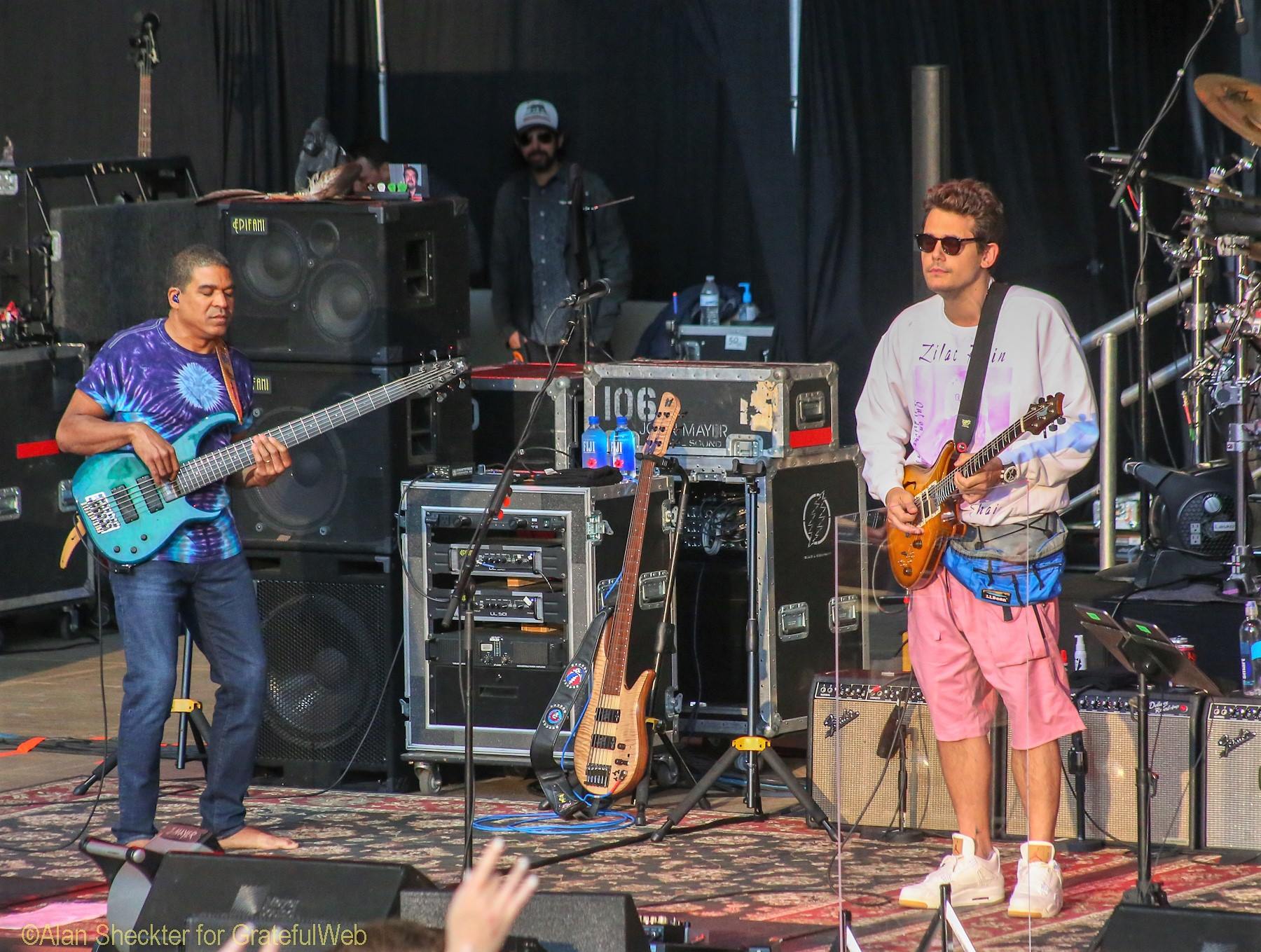
While the second set was comprised completely of songs commonly performed by Dead & Company, and The Grateful Dead as well, the cohesiveness, dynamics, and consummate musicianship were on display throughout. The 27-minute performance of classic triad “Help on the Way” -> “Slipknot” -> “Franklin’s Tower” was particularly inspired. The post-drums “Other One” -> “Wharf Rat” -> “Not Fade Away,” sequence that could have taken place anytime in the past four decades, was anthemic and keenly and freshly delivered. “Touch of Grey,” the biggest of all Grateful Dead successes as a 45-rpm record, was a fine sendoff. Till the next show.
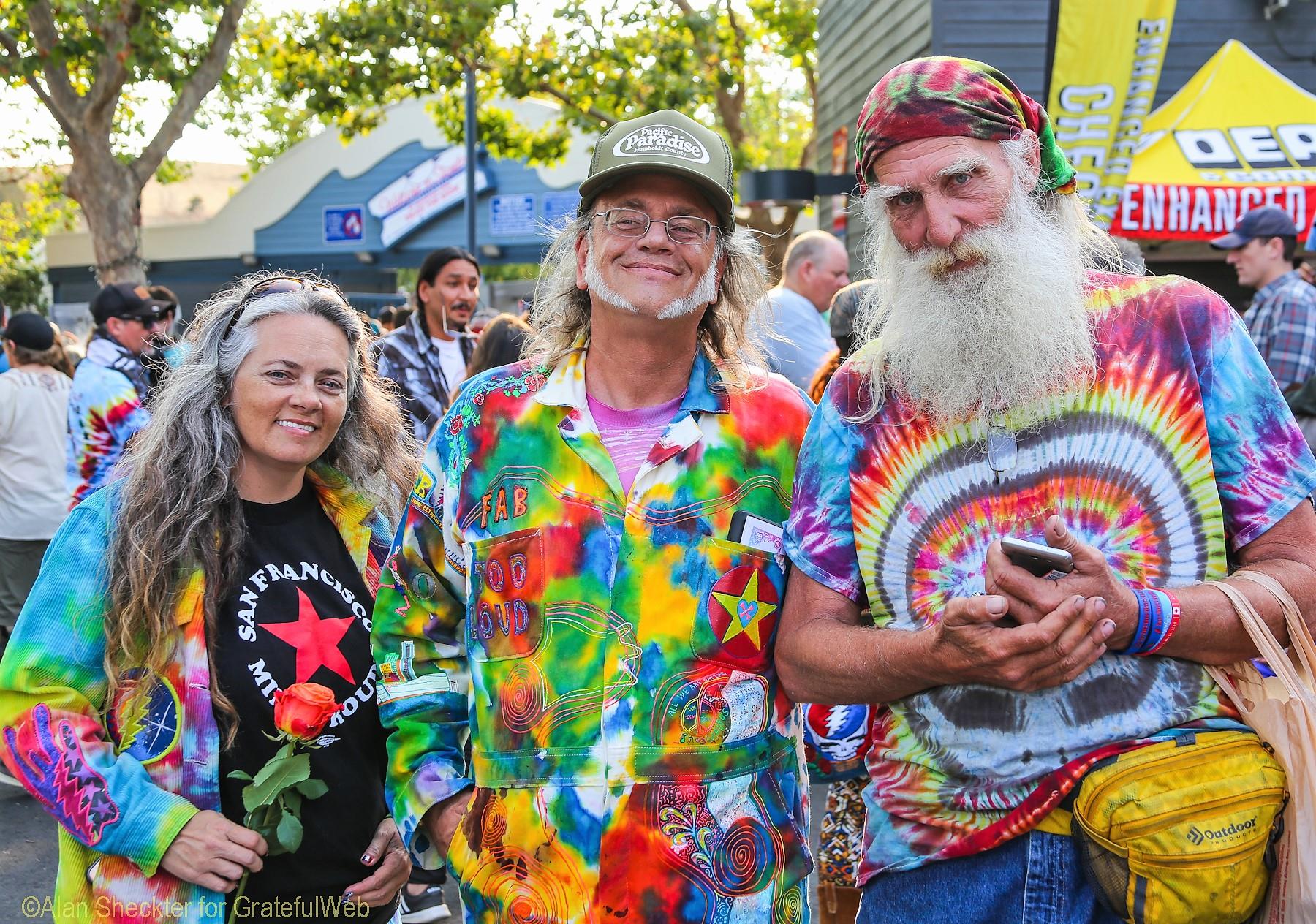
Setlist: I – Feel Like A Stranger, Dancing In The Streets, Hurts Me Too, If I Had The World To Give, Corrina, They Love Each Other, Throwing Stones. II – Lost Sailor -> Saint Of Circumstance, He’s Gone -> Help On The Way -> Slipknot! -> Franklin’s Tower -> Drums/Space -> The Other One -> Wharf Rat -> Not Fade Away. E – Touch Of Grey







